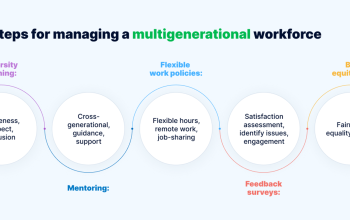Ecommerce has grown significantly since its inception. Its growth has been driven by many factors, including the advancement of technologies.
With the COVID-19 pandemic making working from home a new norm, many businesses have been adapting their operations and shifting to omnichannel software solutions. Among the most prominent trends is automation.
Mobile
Mobile commerce (m-commerce) enables consumers to buy products and services directly through their smartphones, tablets, or laptops. It also enables businesses to engage with customers and provide pre- and post-purchase information.
Consumers are demanding more convenience and ease in their shopping experience. This is leading to a shift toward omnichannel, mobile-first, and voice shopping. Additionally, more brands are incorporating chatbots to offer a more personalized experience and answer customer questions outside of standard business hours. One example is Gymshark, which has a Facebook Messenger chatbot that begins by asking a user what language they speak and then provides a list of prompts to help them quickly resolve issues.
Similarly, many companies are using social media to promote and sell their products through shoppable posts or ‘Buy Now’ buttons on Instagram. This further streamlines the ecommerce process, allowing consumers to complete their purchase without leaving the platform or opening a new tab. This is also helping to boost conversion rates and build brand loyalty.
Payment Gateways
Payment gateways are a critical component of ecommerce. They help merchants accept credit and debit cards from their customers. They also enable fast and secure transactions. They are also used to process international transactions. In addition, they provide valuable transaction data and analytics.
Today’s shoppers demand a seamless shopping experience. This includes multiple payment methods and no-interest financing options like ‘buy now pay later’. Incorporating these features into your eCommerce website can improve conversions, build trust and loyalty, reduce cart abandonment rates, and boost revenue.
The emergence of innovative payments facilitators is changing the way that businesses, acquirers and card networks work together. These new ecosystems can securely store, manage and leverage consumer and merchant data – offering radical new revenue opportunities. They can also enable new customer experiences and unique offerings. These include open banking, real-time payments, cross-border payments, digital wallets and super apps, and embedded payments. These trends will transform the future of ecommerce.
Artificial Intelligence
As digital commerce sales skyrocket, brands are looking for new ways to stand out from the crowd and improve their customer experience. Artificial intelligence is a powerful tool that has the potential to change the face of ecommerce. It can automate tasks, provide personalized content, optimize marketing campaigns, boost supply chain efficiency, and even detect fraud.
Consumers are increasingly using image recognition and natural language to search for products, leading to a more personalized shopping experience. In addition, augmented reality and virtual reality offer an immersive and interactive experience that helps customers examine products closely, builds confidence, and increases purchase rates.
Automation is also making it easier for eCommerce businesses to fulfill recurring orders, which attracts loyal customers and helps them save time. Moreover, it reduces operational costs and helps businesses avoid human error. Additionally, it can help businesses shift employees from hazardous jobs to more fulfilling roles, which helps retain them and improve their quality of life.
Big Data
Big data is an emerging trend that is shaping ecommerce. It helps businesses collect and analyze data from a variety of sources to improve their business operations and increase profits. It also helps in reducing costs and providing value to customers.
This data can be used to identify complex correlations and hidden patterns, which can help in improving business decisions. For example, it can be used to identify trends in customer behavior and predict future product demand. This can be beneficial for both small and large businesses.
Another trend that is shaping ecommerce is the increased popularity of subscription services. These services range from personalized clothing subscriptions to meal kit delivery and beauty products. This is a great way for businesses to provide their customers with a personalized shopping experience and increase brand loyalty. This is especially important in an increasingly competitive marketplace.




